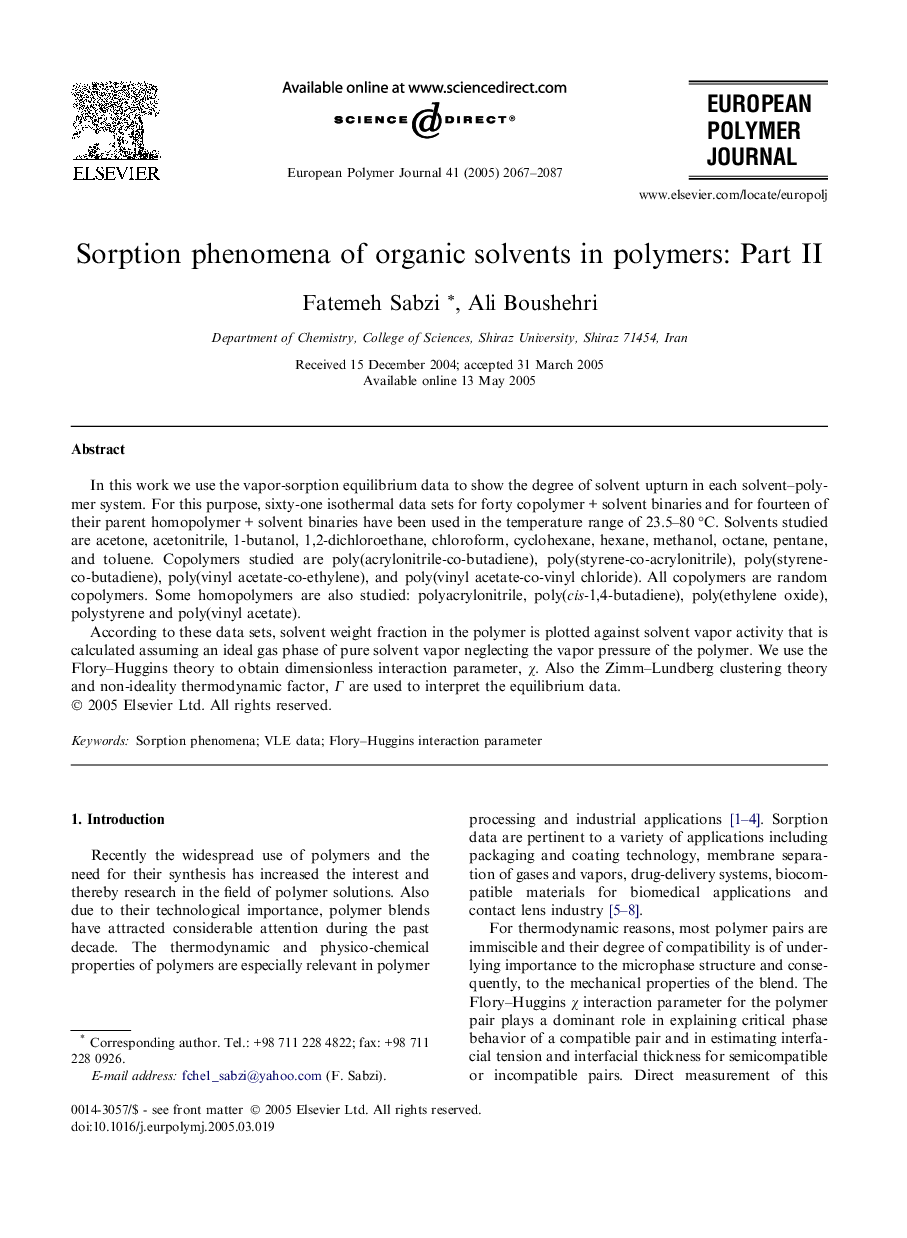| Article ID | Journal | Published Year | Pages | File Type |
|---|---|---|---|---|
| 1401476 | European Polymer Journal | 2005 | 21 Pages |
In this work we use the vapor-sorption equilibrium data to show the degree of solvent upturn in each solvent–polymer system. For this purpose, sixty-one isothermal data sets for forty copolymer + solvent binaries and for fourteen of their parent homopolymer + solvent binaries have been used in the temperature range of 23.5–80 °C. Solvents studied are acetone, acetonitrile, 1-butanol, 1,2-dichloroethane, chloroform, cyclohexane, hexane, methanol, octane, pentane, and toluene. Copolymers studied are poly(acrylonitrile-co-butadiene), poly(styrene-co-acrylonitrile), poly(styrene-co-butadiene), poly(vinyl acetate-co-ethylene), and poly(vinyl acetate-co-vinyl chloride). All copolymers are random copolymers. Some homopolymers are also studied: polyacrylonitrile, poly(cis-1,4-butadiene), poly(ethylene oxide), polystyrene and poly(vinyl acetate).According to these data sets, solvent weight fraction in the polymer is plotted against solvent vapor activity that is calculated assuming an ideal gas phase of pure solvent vapor neglecting the vapor pressure of the polymer. We use the Flory–Huggins theory to obtain dimensionless interaction parameter, χ. Also the Zimm–Lundberg clustering theory and non-ideality thermodynamic factor, Γ are used to interpret the equilibrium data.
